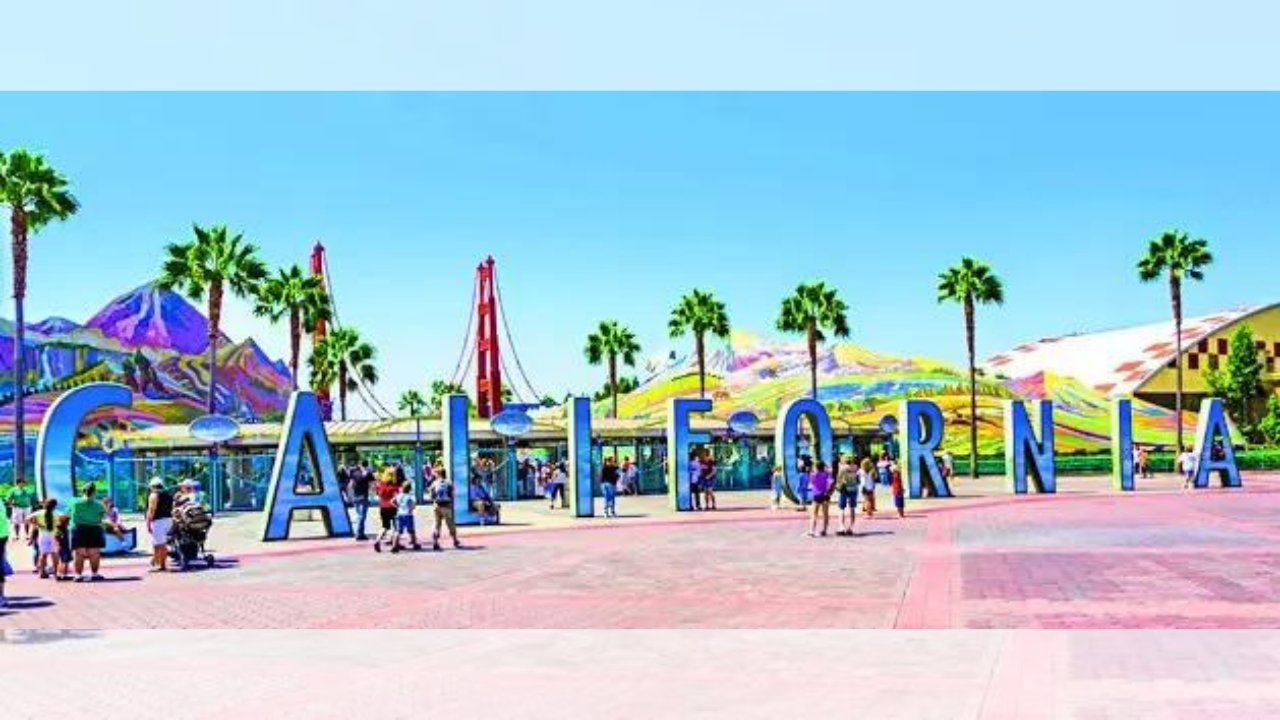Perhaps you remember the commercials: images of the glittering blue Pacific, the majestic peaks of Yosemite, storybook vineyards and ancient redwoods stretching toward the sky.
For more than 10 years, tourism advertisements have painted California as a place for dreamers, a place for adventure and testing your limits by surfing, rock-climbing and skiing. The state tourism agency, Visit California, led the campaign, which invited people from around the world to “Dream Big” and travel to the Golden State.
Not anymore.
This spring, Visit California replaced “Dream Big” with a new campaign and a new brand for the state, as the “Ultimate Playground.” The scenes in the ads are much the same as before — with the addition of the Rady Shell, San Diego’s outdoor concert venue that opened in 2021 — but there’s no longer any mention of dreams.
Caroline Beteta, the CEO of Visit California, said there were a number of reasons for the switch, including that branding phrases like “Dream Big” tend to lose power over time and that the concept of dreaming had been popping up elsewhere, in corporate advertising.
Another major driver of the “Ultimate Playground” campaign was a more polarized political climate across the United States, which has created antipathy toward California in some parts of the country.
Beteta said that the agency’s consumer research confirmed that Americans increasingly see the world through a political lens, and that framing California as a place to dream about was striking some viewers as a political statement. “Ultimate Playground” seemed to be a safer and less charged message.
The new campaign is meant to tap into pent-up demand for excitement and travel after pandemic restrictions. Visit California’s research found that 43% of consumers said vacations were the only time they could really let go and play.
California’s tourism sector was doing well even before the new campaign. Spending by tourists rose to a record-high $150.4 billion in 2023, Gov. Gavin Newsom said over the weekend — surpassing 2019 and suggesting that the pandemic slump has ended. The surge generated billions of dollars in tax revenue for the state and helped create 64,900 new jobs last year.
For more than 10 years, tourism advertisements have painted California as a place for dreamers, a place for adventure and testing your limits by surfing, rock-climbing and skiing. The state tourism agency, Visit California, led the campaign, which invited people from around the world to “Dream Big” and travel to the Golden State.
Not anymore.
This spring, Visit California replaced “Dream Big” with a new campaign and a new brand for the state, as the “Ultimate Playground.” The scenes in the ads are much the same as before — with the addition of the Rady Shell, San Diego’s outdoor concert venue that opened in 2021 — but there’s no longer any mention of dreams.
Caroline Beteta, the CEO of Visit California, said there were a number of reasons for the switch, including that branding phrases like “Dream Big” tend to lose power over time and that the concept of dreaming had been popping up elsewhere, in corporate advertising.
Another major driver of the “Ultimate Playground” campaign was a more polarized political climate across the United States, which has created antipathy toward California in some parts of the country.
Beteta said that the agency’s consumer research confirmed that Americans increasingly see the world through a political lens, and that framing California as a place to dream about was striking some viewers as a political statement. “Ultimate Playground” seemed to be a safer and less charged message.
The new campaign is meant to tap into pent-up demand for excitement and travel after pandemic restrictions. Visit California’s research found that 43% of consumers said vacations were the only time they could really let go and play.
California’s tourism sector was doing well even before the new campaign. Spending by tourists rose to a record-high $150.4 billion in 2023, Gov. Gavin Newsom said over the weekend — surpassing 2019 and suggesting that the pandemic slump has ended. The surge generated billions of dollars in tax revenue for the state and helped create 64,900 new jobs last year.
Credit: Source link


